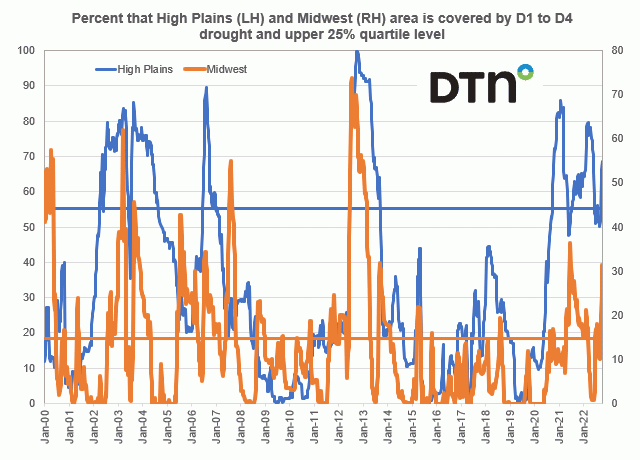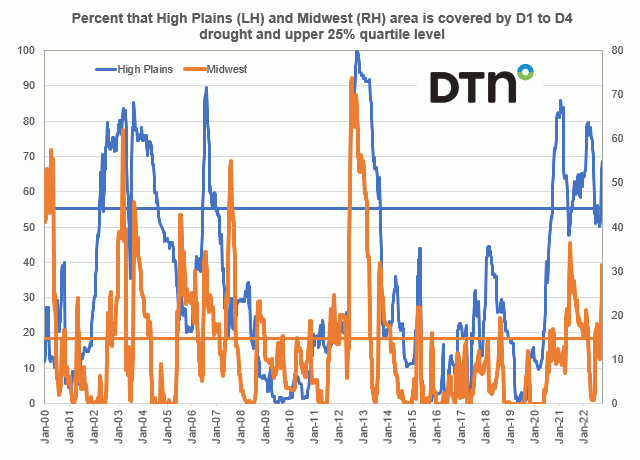Fundamentally Speaking
World Corn, Soybean & Wheat Stocks-to-Use Ratios
This year's coarse grain and oilseed crop shortfall in a number of key producing countries and regions, along with robust import demand from China as they have rebounded far stronger than expected from the pandemic, has sent at least the global corn and soybean stocks-to-use ratios to their lowest levels in years, although this is not the case for wheat.
This chart shows the world corn, soybean and wheat stocks-to-use ratios since the 1990/91 season on the left-hand axis and percent that each year's stocks-to-use ratio differed from the 30-year trend of these stocks-to-use ratios.
Note that over the past 30 years the global corn stocks-to-use ratio has trended lower over time, while that for soybeans and wheat has trended higher.
P[L1] D[0x0] M[300x250] OOP[F] ADUNIT[] T[]
For soybeans, even though demand has grown at a brisk pace, production appears to have outpaced that for it was just two years ago the world soybean stocks-to-use ratio at 32.9% was the highest ever.
For wheat, stagnant demand has led to all-time highs in both stocks and the stocks-to-use ratio for the second year in a row and four of the past five seasons.
Only in corn has the world stocks-to-use ratio trended lower, probably linked to the renewable fuels boom, though it was just four years ago the global corn stocks-to-use ratio was record high.
This year's world corn stocks-to-use ratio is 26.0%, the lowest since 22.6% in the 2013/14 season, though 3.8% higher than this year's trend of a 22.2% ratio, the lowest positive differential seen also since the 2013/14 year.
This year's world wheat stocks-to-use ratio is 43.0%, the highest ever and 8.9% higher than this year's trend of a 34.1% ratio, and is also the highest positive differential at least in 30 years.
For soybeans however, this year's world stocks-to-use ratio is 23.9%, and like corn is the lowest since the 2013/14 season when it was 22.8%.
This year's ratio is 4.6% lower than this year's trend of a 28.5% ratio and that is the largest negative differential seen since the 1996-97 season.
To sum it up it appears we have plenty of wheat, corn stocks are tight but not the degree that we saw a decade ago and world soybean supplies are tight as the global stocks-to-use ratio has fallen by 9% since the 2018/19 season, the largest two year decline ever.
(c) Copyright 2020 DTN, LLC. All rights reserved.






Comments
To comment, please Log In or Join our Community .